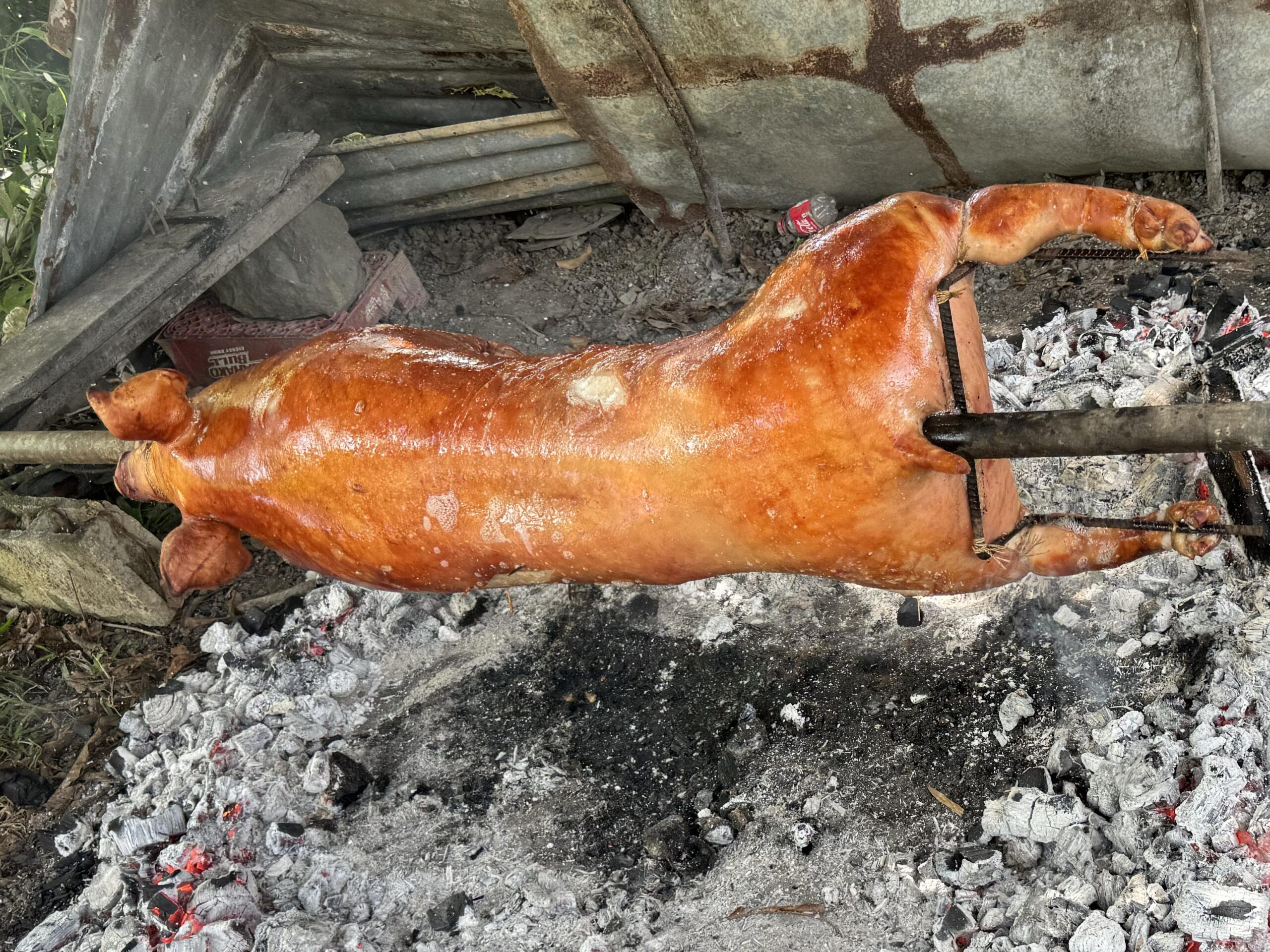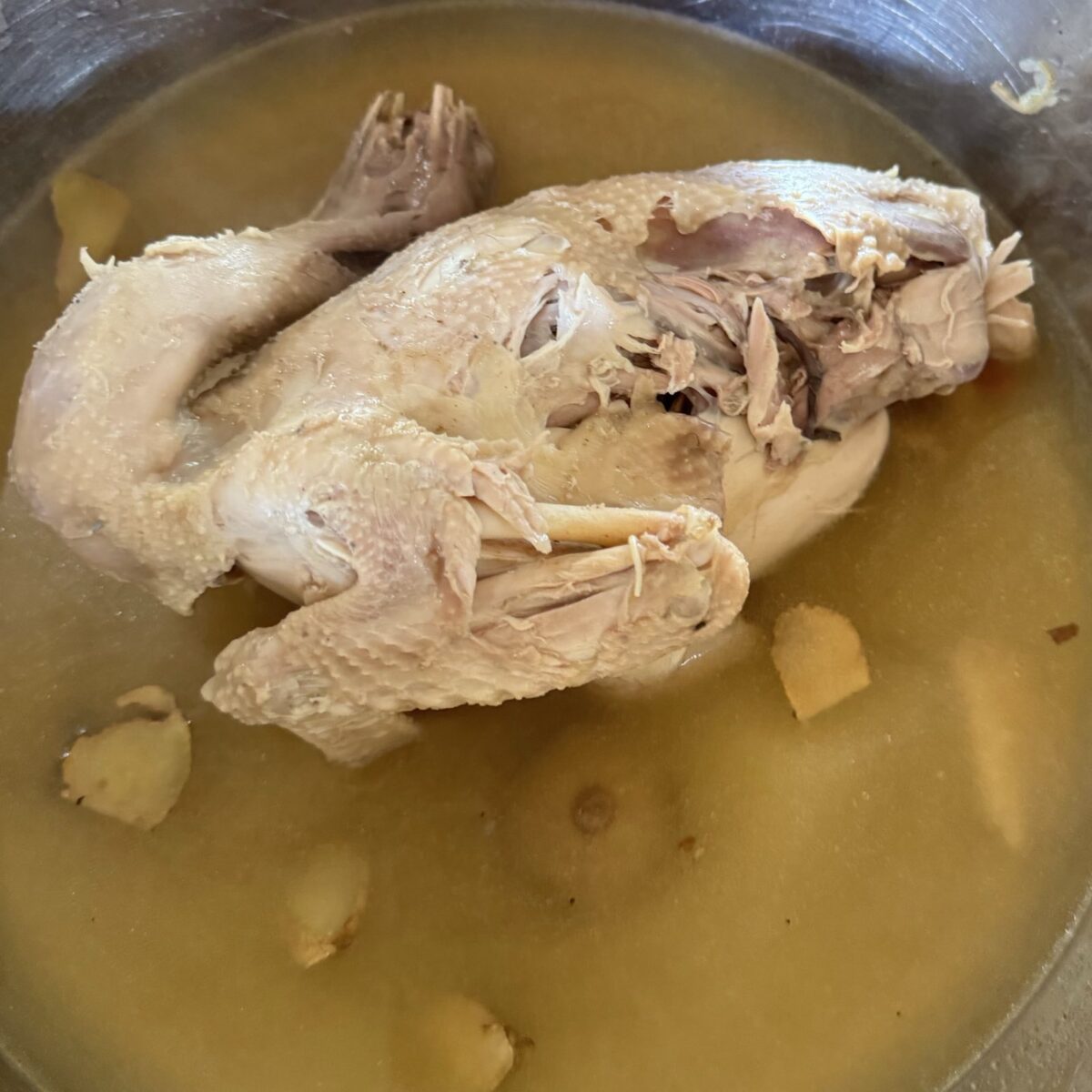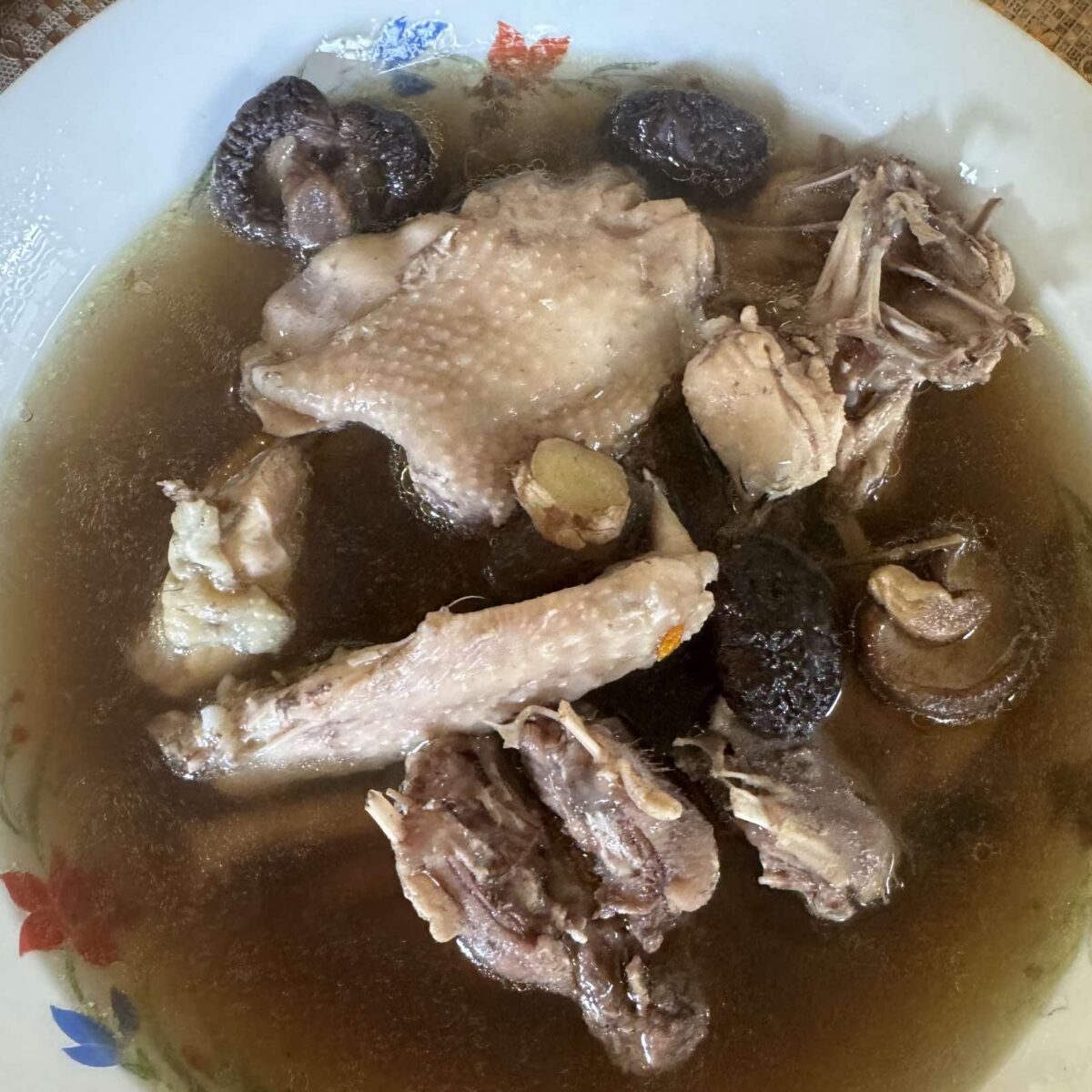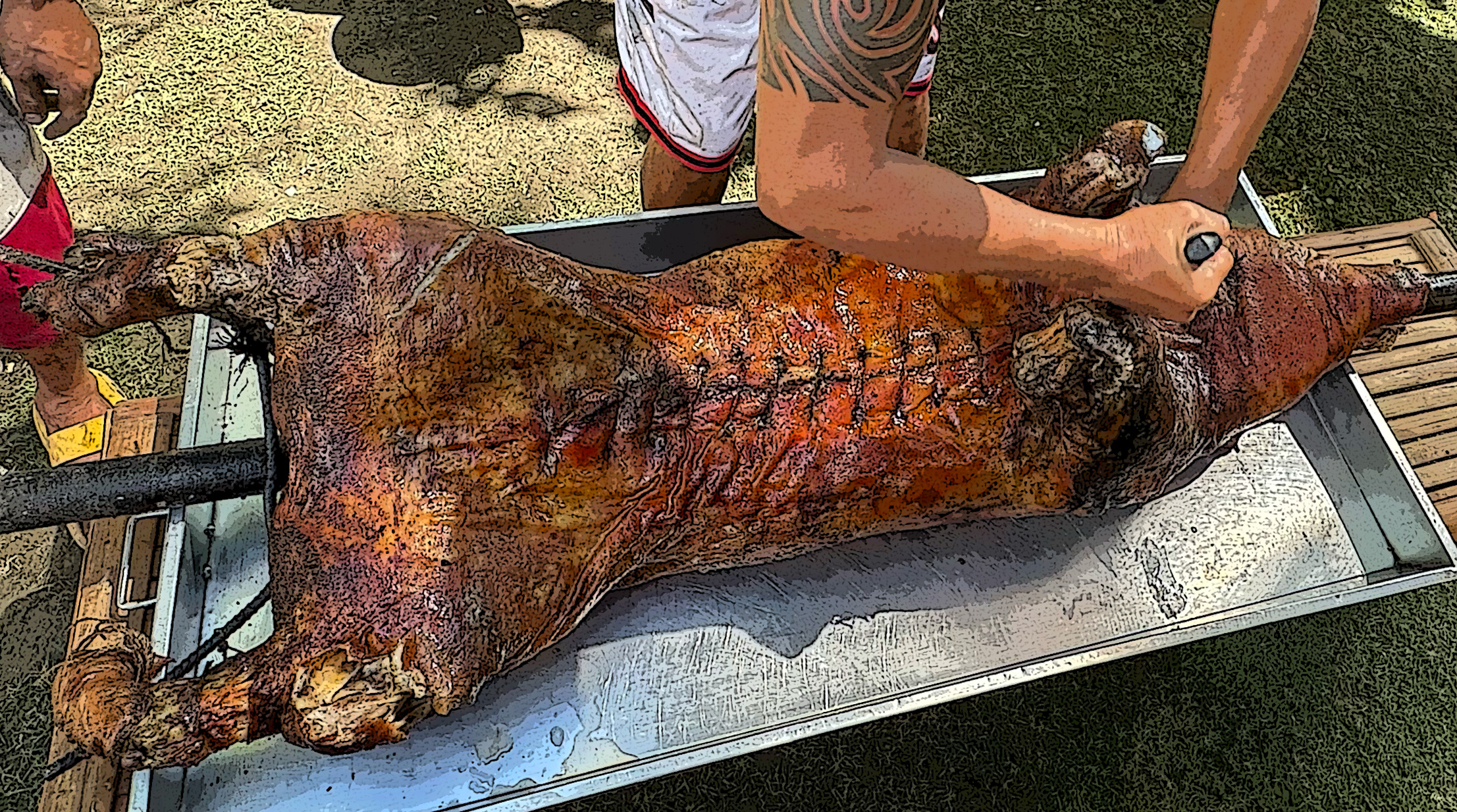Who makes the better Lechon Baboy or Roasted Pig?

A visit to Barangay Adlaon in Cebu showed me that mountain barangays prize the huge lechon baboy or roasted pig more than the smaller pig. A whole pig can weigh as much as 40 to 80 kilos.
As a low-land urban dweller in the Philippines, I am accustomed to seeing whole roasted pigs that are around 20 kilos or less. I also grew up with the notion that the smaller the lechon, the nicer the taste. The Cochinillo or the baby pig is, thus, a prized dish.
But just as the low-land urban dweller like me isn’t drawn to a huge lechon, mountain dwellers find the smaller sized lechon not as palatable as the huge ones.
How it’s Roasted
My mother recently shared that she attended a birthday party where the lechon was huge but good tasting. Her host shared the cooking process… the pig is roasted on a spit up to the point when the cook can see that the juices in the pig’s belly are boiling. When it reaches this stage, the cook moves the coals away from the pig so that it can cook slowly for an additional three hours. The result is a well roasted pig that Bisayans call lata or tender. This story piqued my interest in the huge pig.
When I learned that I would be seeing huge lechons at the Cebu City mountain barangay of Adlaon, I immediately said yes to an invitation by Cebu City Councilor Mary Ann de los Santos to attend the barangay’s fiesta with her.
Three Huge Pigs
I had the privilege of tasting three lechons in a single morning on the day of the fiesta last February 10, 2024. All the pigs were cooked for at least four hours.

As we walked from one house to the next, I overheard someone say in an amused tone that she saw a roasted pig that was just bag-ong lutas or newly weaned. This meant the pig was the small size low-land dwellers are used to eating.
People in the mountain barangays take pride in the bigger pig because more guests can partake of it. They also find it more flavorful because the thick layer of fat of the huge pig gets rendered in the cooking process, making it more tender.
The Recipe
The first two lechons that I tasted were roasted in the backyard of the hosts. I had expected an off-taste that I sometimes find in the city lechon but there wasn’t any in the first lechon.
The skin, though, was not as crunchy as I hoped it would be, perhaps, because as the host mentioned, it had rained and disrupted the roasting. But I liked the meat; it was tasty and well seasoned and wasn’t as salty as the city lechons.

The second pig was roasted by guest cook Antonio Bargamento who shared his recipe:
For every 10 kilos of meat, he puts in 1/4 kilo of salt and he mixes the salt with 8 ounces of Sprite. (That’s 236 ml.) He adds garlic, onions, and spring onions.
My tastebuds say…
All the three roasted pigs I tasted were good and succulent. No off-taste or smell. I would prefer eating these huge lechons over the small ones in the city.
All three, however, did not have the crunchy skin of the cochinillo that I recently tasted. Some years ago, a Cebuano lechonero who cooked for us said that the goal in cooking lechon is to “cook it till it’s lata. If one really wants crispy skin, then eat a chicharon.” 😆
But Mary Ann says that huge lechons can have crunchy skin too. I thus want to give the huge lechon another taste test to satisfy this criteria of a good lechon.
It would be nice to have a small and huge lechon side by side in a Cebu City lechon showdown.
Scenes and Dishes at the Fiesta







—- ⬤ —-
Thanks to the gracious hosts Barangay Capt. Nieves Narra, Lemy and Janice Arcayan, Junior Revales, and Reco Gabato.
—- ⬤ —-
End Notes
In History. Raising a huge pig. In his History of the Bisayan People in the Philippine Islands, 1668, Fr. Francisco Ignacio Alcina talks about a huge pig. The owner was …
… a man of good humor and who had been an alcalde mayor in the jurisdiction of Leyte. He presented to Don Alonso Fajardo, the governor of these Islands, a hog of the Ilocos variety. (It was) so large that he saddled, bridled, and mounted it. Then he went to the palace to (give) his gift.

Leave a Reply